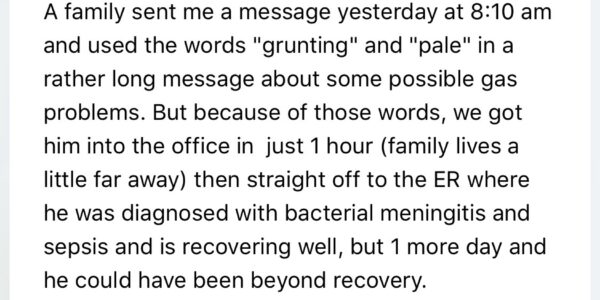There are thousands of companies out there that sell solutions to help you grow your medical practice. The majority of them focus almost entirely on marketing, not patient experience. There are companies to help you manage your Facebook Ads and Adwords campaigns. There are companies that sell practice website solutions. And of course, the newspaper wants to sell you ad space and put you in the Yellow Pages.
And make no mistake, marketing is a really important part of practice growth.
However, it is not the most important element.
If you want to grow your practice, the one thing more important than marketing is patient experience.
How do you improve the patient experience?
To set the stage, here’s how the Agency for Healthcare Research and Quality defines patient experience:
Patient experience encompasses the range of interactions that patients have with the health care system, including their care from health plans, and from doctors, nurses, and staff in hospitals, physician practices, and other health care facilities. As an integral component of health care quality, patient experience includes several aspects of health care delivery that patients value highly when they seek and receive care, such as getting timely appointments, easy access to information, and good communication with health care providers.
If you’re lucky, you’ve had a great patient experience at a practice with a helpful staff, a smart doctor with impeccable bedside manner, and hopefully a positive clinical outcome.
More than likely, you also know what a bad patient experience looks like.
Here are 5 things you can do to grow your practice by designing for patient experience.
1. Make it ridiculously easy to contact you
A lot of time and planning must go into the way patients first contact your practice. Can they easily contact you to setup an appointment after seeing a Facebook Ad? Or if they learn about you from a friend or family member and go to your website, is it easy to find your phone number?
Better yet, is there a way your patients can ask a question from your website?
Map out all the potential paths that a patient could take to find your practice and ensure that you have a frictionless process to contact you.
2. Painless patient registration
Once those flows have been documented, focus on staff training for how to talk to a new patient. Staff should only collect the bare minimum amount of information to set them up in your practice management system or EHR.
Each unnecessary question you ask, or form you make them fill out is going to make the patient experience slightly less positive. The less friction there is to setting up an appointment, the better the patient experience.
3. Give them a “wow” moment early
It can be hard to keep your head above water on any given day working in healthcare. But it doesn’t take much extra effort to give your patients something they’ve never had before: a patient experience that feels like a truly great customer experience. It starts with a comfortable waiting room that doesn’t feel sterile and cold.
The next level of “wow” could be something as simple as putting a Keurig coffee machine or some snacks in the waiting room and giving them access to Wifi. There are dozens of other things you can do, just be creative and use some of your best customer experiences as inspiration.
In addition to that, a friendly/caring staff is a must. If you take a gander at online reviews of some local practices, you’ll see how impactful staff can be on the patient experience.
4. Be the best doctor/nurse practitioner/chiropractor that you can be
This is the hardest part. You have a limited amount of time to see each patient so you can keep the lights on. So the work you do in that short period of time must be impactful. You aren’t going to win over every patient in 10 minutes. But phenomenal bedside manner goes a really long way. If you show that you are listening and that you actually care about that patient, that will go a long way.
5. Patient communication that scales
Back in the old days when physicians made house calls and didn’t need to see 40 patients/day, they were available by phone. Obviously it’s more complicated these days and the economics for that model don’t work like they used to. However, most practices are still stuck with the same communication medium…phones.
And a good old fashioned phone call can still be helpful, but one thing is for sure…it doesn’t scale.
On top of that, the majority of your patients are likely tired of phone calls and voicemails. Studies show that 68% of American consumers say they spend more time texting than they do on phone calls (source). In fact, companies that score highest on their customer satisfaction feedback use texting as their primary way to communicate with customers.
Healthcare is no different from a patient experience perspective. Patients prefer to communicate using text messaging. And with the right platform, texting is a far more efficient way to reach patients at scale. These new platforms allow staff that typically answer phones to spend 1/10th the time trying to communicate with patients in a way that will conclusively improve patient experiences.


